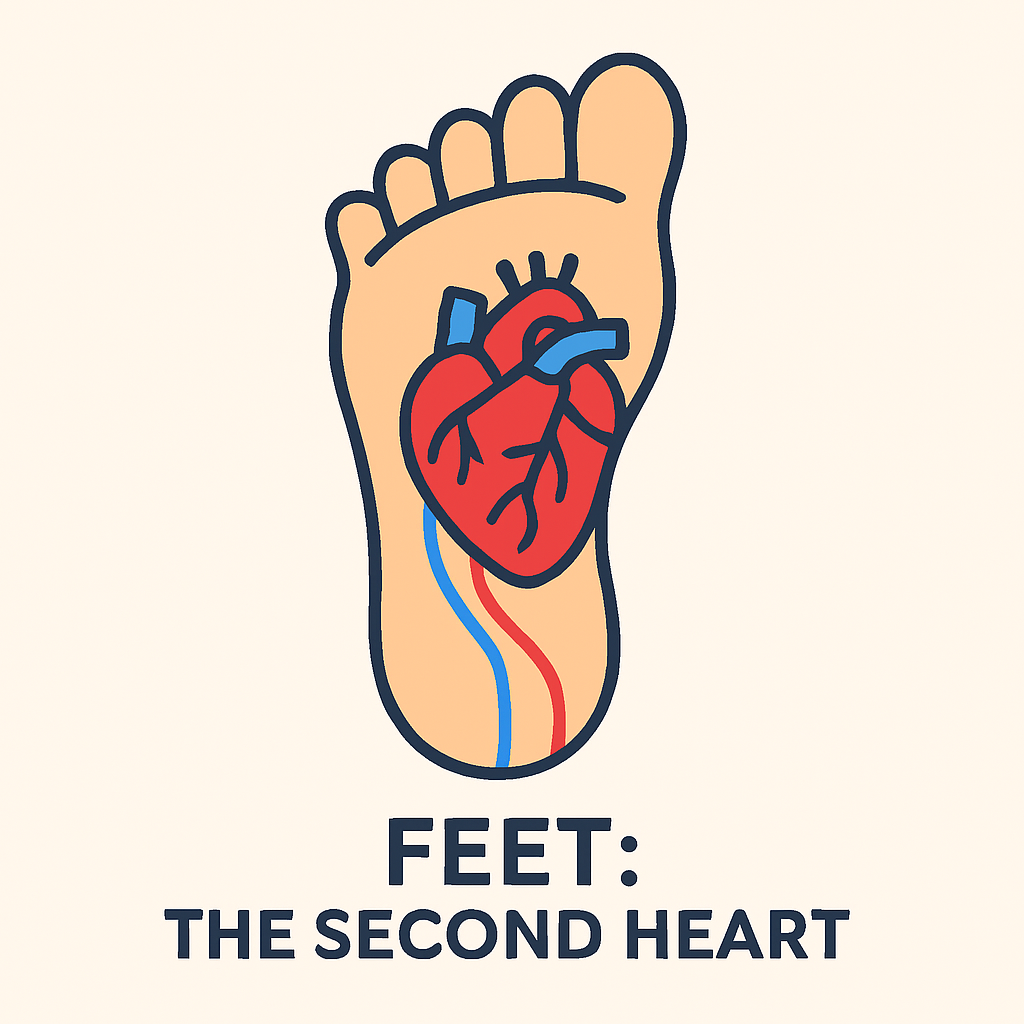
The Second Heart: Why Your Feet Matter More Than You Think
Johnson FooFeet: The Second Heart in Chinese Culture

In Traditional Chinese Medicine (TCM), the feet are regarded as more than just a foundation for movement—they are often referred to as the "second heart" of the body. This concept stems from the belief that the feet play a crucial role in circulation, balance, and overall well-being (Wang & Zhang, 2016). Ancient wisdom suggests that by nurturing the feet, one can support the entire body's health and vitality.
The Foot-Organ Connection in TCM

TCM views the human body as a highly interconnected system, where different areas influence one another. According to TCM principles, the soles of the feet contain numerous reflex points that correspond to vital organs, including the heart, liver, kidneys, and stomach. These points, mapped out in reflexology, have been stimulated for centuries to enhance circulation and promote healing (Zhou, 2015; World Health Organization [WHO], 2002).
By applying techniques such as massage, acupressure, and herbal foot baths, practitioners believe that the flow of Qi (vital energy) can be optimized, reducing stagnation and improving organ function. As a result, foot care is deeply integrated into traditional Chinese health practices, emphasizing the importance of maintaining harmony within the body (Ni, 1995).
The Role of Feet in Circulation
Both Western and Chinese medicine recognize circulation as a cornerstone of health. Positioned at the lowest point of the body, the feet must work against gravity to return blood to the heart. This function parallels the role of the heart itself, which is why they are metaphorically referred to as the "second heart" (Singh et al., 2017). Poor circulation in the feet can contribute to cold extremities, swelling, fatigue, and other health concerns over time.

In TCM, stagnation of blood and Qi in the lower body is believed to cause ailments such as joint pain, digestive issues, and general discomfort. By enhancing circulation through targeted foot care, individuals can support their overall well-being and prevent imbalances from taking root (Ni, 1995).
The Healing Benefits of Traditional Chinese Foot Baths
One of the most time-honoured practices in Chinese culture is the use of herbal foot baths. These warm soaks, enriched with medicinal herbs such as mugwort (艾叶), ginger (生姜), safflower (红花), and female ginseng (当归), are believed to activate circulation, dispel cold, and nourish internal organs through foot stimulation (Xu et al., 2020).

Key benefits of herbal foot baths in TCM include:
-
Promoting Blood Flow – The combination of warm water and therapeutic herbs supports healthy circulation, alleviating symptoms of cold feet and fatigue (Zhang et al., 2014).
-
Aiding Detoxification – Certain herbs are thought to assist in drawing out toxins and enhancing the body's natural cleansing processes.
-
Reducing Stress and Enhancing Sleep – A foot soak before bed is believed to calm the nervous system, facilitating relaxation and improving sleep quality (Zhang et al., 2014).
-
Restoring Yin-Yang Balance – By regulating the body's energy flow, foot baths contribute to a balanced internal environment, promoting overall vitality (Xu et al., 2020).
Integrating Foot Care Into a Modern Lifestyle
In today’s fast-paced world, prioritizing foot health is often overlooked. However, the principles behind traditional foot care remain highly relevant, particularly for individuals experiencing stress, fatigue, or circulatory challenges. Taking just 20–30 minutes to soak the feet in warm herbal water offers a simple yet effective method to restore energy and promote long-term well-being (Chen, 2018).
By embracing the traditional perspective that the feet serve as the "second heart," we can incorporate holistic self-care practices that align with both ancient wisdom and contemporary wellness strategies. Whether through warm foot soaks, therapeutic massage, or mindful foot care, we can take meaningful steps toward better health—starting from the ground up.
References (APA Style)
Chen, Y. (2018). Traditional therapies in contemporary wellness: Reviving Chinese herbal practices. Journal of Holistic Health, 12(2), 14–22.
Ni, M. (1995). The Yellow Emperor’s classic of medicine: A new translation of the Neijing Suwen with commentary. Shambhala Publications.
Singh, A., Saluja, M., & Singh, R. (2017). The physiology of venous return: Role of the calf muscle pump. International Journal of Vascular Medicine, 2017, Article ID 6020259. https://doi.org/10.1155/2017/6020259
Wang, J., & Zhang, H. (2016). Traditional Chinese medicine: Heritage and adaptation. People’s Medical Publishing House.
World Health Organization. (2002). WHO international standard terminologies on traditional medicine in the Western Pacific Region. World Health Organization.
Xu, H., Li, Y., & Chen, Z. (2020). Research on herbal foot baths in TCM: A review of its mechanisms and clinical applications. Evidence-Based Complementary and Alternative Medicine, 2020, Article ID 6890273. https://doi.org/10.1155/2020/6890273
Zhang, X., Liu, J., & Wang, Y. (2014). Effects of foot bath therapy on peripheral circulation and sleep quality in middle-aged adults. Chinese Journal of Integrative Medicine, 20(1), 56–60. https://doi.org/10.1007/s11655-014-1759-7
Zhou, Q. (2015). Foot reflexology: Theory and practice in Chinese medicine. Shanghai University of TCM Press.
